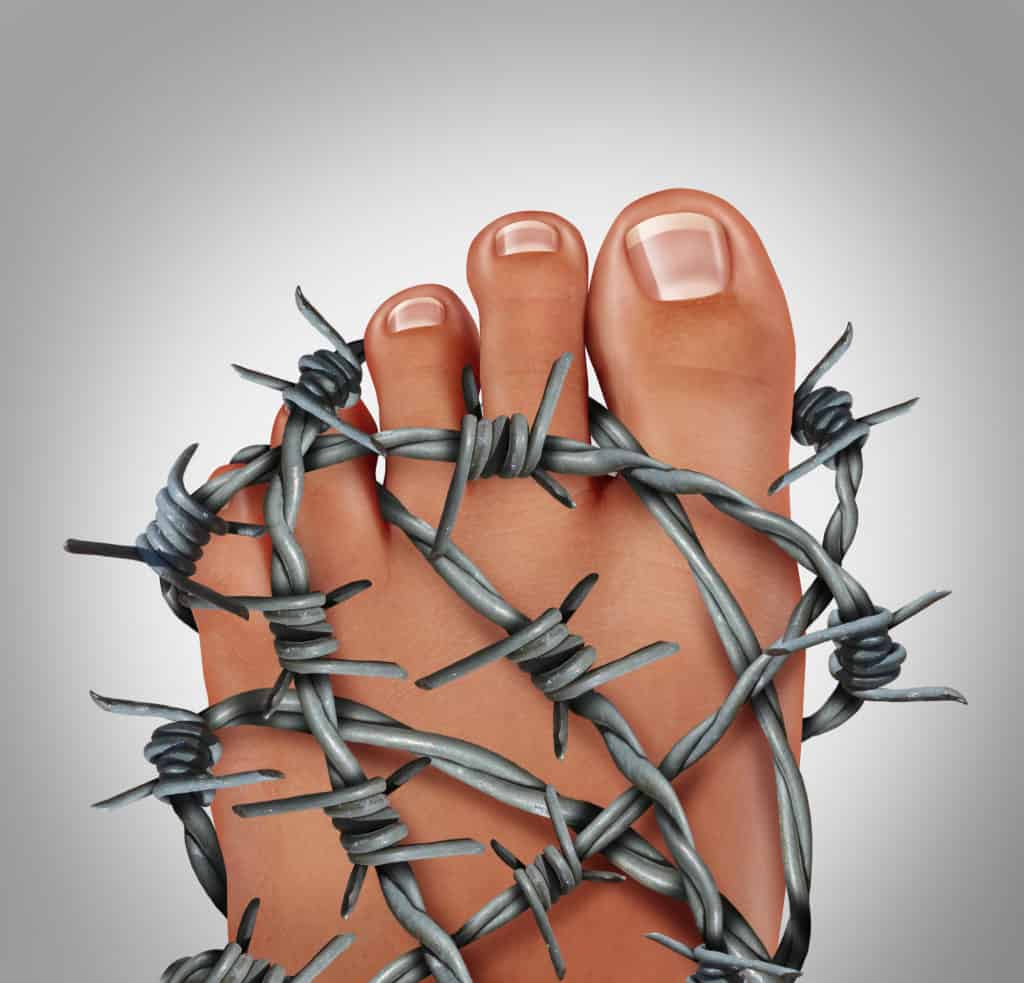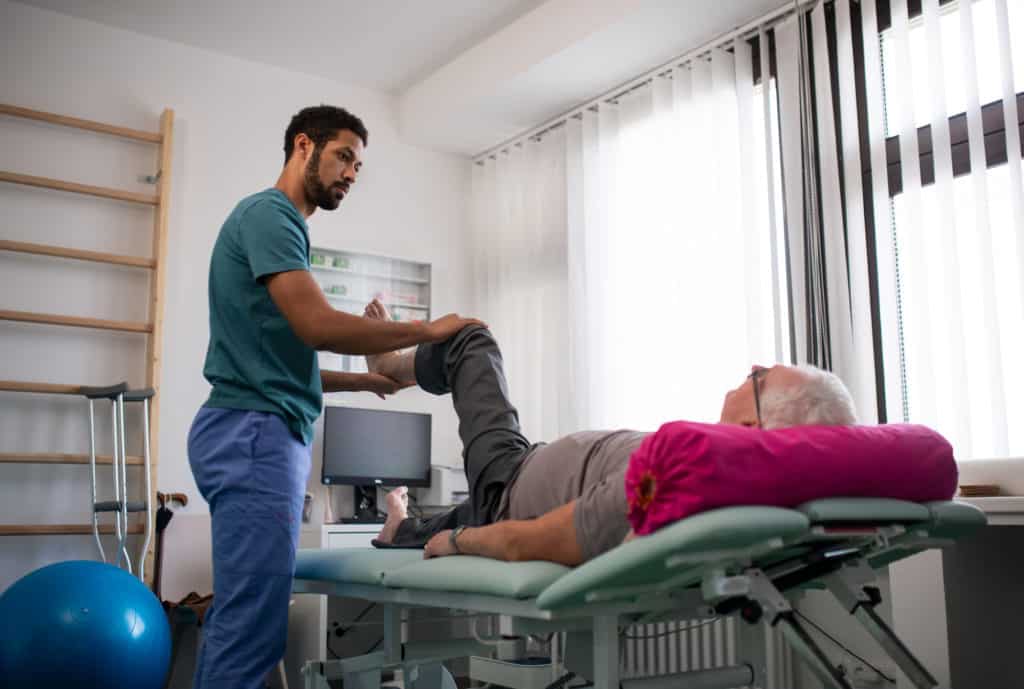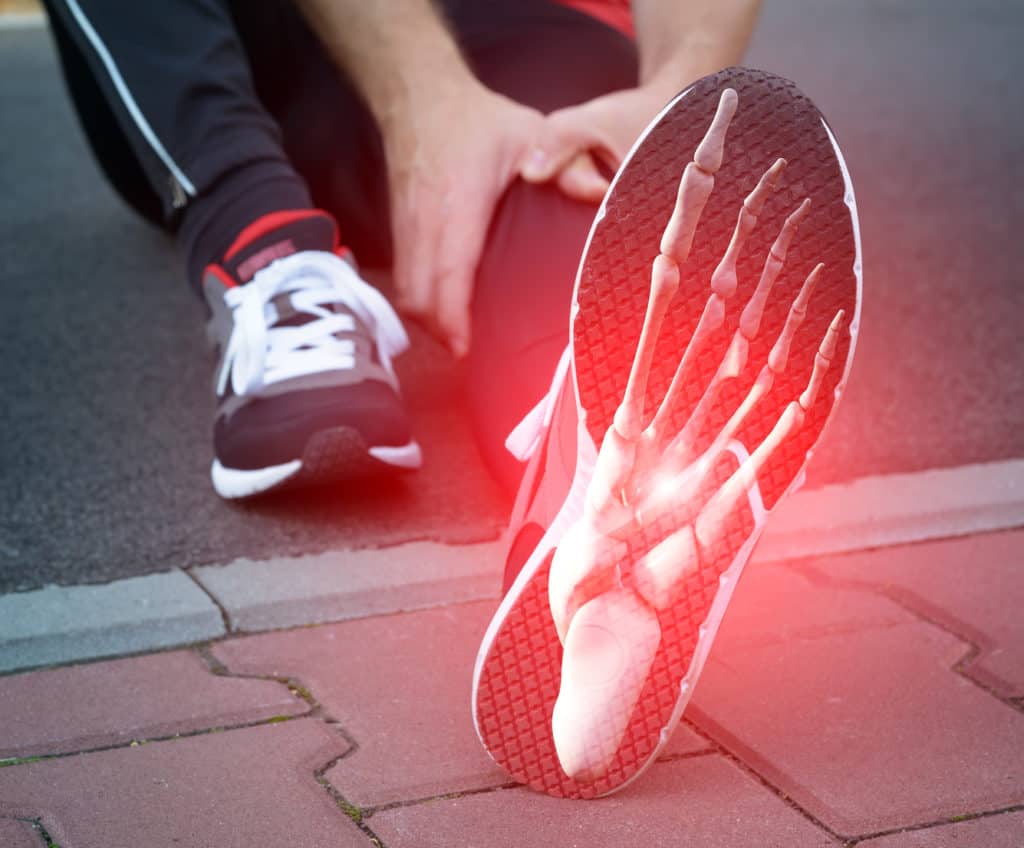
Does every step hurt?
Struggling to undertake daily chores?
Fighting the urge to just give up?
When every step, or movement, sends a bolt of pain across your forefoot, it won’t be long before frustration and discomfort suffocate your ambition and energy.
Pain in this area is a surprisingly debilitating affliction. That might sound over dramatic, but our feet serve as our foundation; working to support the weight of the body while also facilitating a full range of movement.
It can be tempting to ignore foot pain. It seems to be human nature to wait and hope that the problem goes away. It’s not an uncommon assumption that sore feet are part and parcel of life, especially if we’ve been exercising more than normal. But you are only prolonging your pain. And over-the-counter pills only really mask the problem.
However, when forefoot pain strikes, life can suddenly grind to a halt.
It’s not just participation in sports that can become uncomfortable or impossible. Day-to-day tasks can alo become a constant irritation – especially the tasks that we tend not to give much thought towards. For example, getting your shoes on suddenly becomes distressing.
More Foot Blogs From Cardin & Miller Physical Therapy
What Exactly Are Foot Orthotics? And How Can It Help Me?
My Heel And Arch Pain Is Ruining My Life…What Can I Do?
Are My Flat Feet Causing My Foot Pain?
All sorts of seemingly normal activities are suddenly out of reach. Climbing stairs, pushing down on the gas/brake pedal as you drive your vehicle (rather dangerous!), getting up from a standing position, standing on firm surfaces – all leading to a desire for a quick and effective resolution to the problem. And that’s where physical therapy comes in. More on that in a bit.
If pain radiates from your foot (or both feet), it’s important to get yourself check out. If you have an underlying medical condition such as diabetes or neuropathy, it is particularly important to seek medical advice. There could be far-reaching complications should you bury your head in the sand.
Unless you are sitting or lying down, the feet are constantly dealing with bearing the weight of the rest of your body. It is therefore easy for a small problem to develop into something that could have repercussions later in life or for years after the point of injury.
So, how can physical therapy help?
To understand how we can counteract forefoot pain, we first need to understand what the forefoot is.
Pain In The Forefoot

Of the three sections of the foot, the forefoot is the longest as well as being a complex structure composed of small bones, ligaments, muscles, tendons and nerves. Should you land awkwardly or have a severe frontal impact to the foot, these delicate parts are prone to damage. Pain in the forefoot can often stem from a fracture and is worth expert consultation.
1/ Metatarsalgia – Forefoot Fracture
If notable pain appears to come from only one or two toes as well as the sole of the foot, a common forefoot fracture called metatarsalgia may be to blame. If this is the case, your foot pain will be most noticeable when walking and supporting your weight through the affected foot. The ache will likely continue when you are resting too. Some people also describe the sensation of what feels like a pebble lodged under their foot as well as pain when squeezing the forefoot, such as when you are trying to put shoes on.
The metatarsals are long bones within the forefoot that lead up to what most people regard as the beginning of their toes. Fractures within these bones are spotted via MRI and CT scans and treatment is determined by exactly where the injury is located and the extent of the damage.
2/Morton’s Neuroma
Morton’s neuroma is a condition that has some symptomatic similarities to metatarsalgia and is a condition that arises from benign tissue building up around and compressing the nerves that run between the metatarsal bones (most usually the third and fourth metatarsals). It is common in those who undertake long-distance running or walking.
This condition results in shooting pains through the foot when active, periodic numbness and stiffness as well as the feeling of a pebble being stuck underfoot.
3/ Hammer Toe
Hammer toe occurs where the metatarsophalangeal joint becomes cocked upwards, subsequently forcing the connecting joint to bend downwards. This deformity is usually caused by ill-fitting shoes but can usually be remedied via taping of the toes as well as mobilisation movements and strengthening exercises.
4/ Bunions
Bunions are prominent bumps that are situated alongside where either the large toe or the small toe appear to end. Bunions are caused by malalignment within the toe joints and is a condition which can get progressively worse, causing a more pronounced visible effect as well as increasing pain.
Bunions are usually caused by poor foot biomechanics or unsuitable footwear. High heels are notorious for increasing the risk of bunions for they concentrate the pressure of weight-bearing down through the toes. Additionally, the hormonal effects of pregnancy can cause physical change within the ligaments, also leading to this problem.
5/ Severe Callusing
An area of callusing on the foot is a common affliction as skin builds up in response to repeated use and pressure, which is precisely what your feet deals with day-to-day. Callusing is a protective mechanism, usually seen on the heel and ball of the foot. However, where callusing builds up significantly, this can lead to rubbing between the skin and your socks and shoes. In turn, painful blisters can form in these areas.
6/ Plantar Plate Tears
The plantar plate is a strong ligament that runs from the heel bone to the toes, helping to control toe movement. When this ligament becomes damaged, it is common for foot pain to originate from the ball of the foot combined with swelling on top of the foot and visible separation between the toes. Often, the second and third toe look like they’re trying to stay clear of each other, with a V-shaped gap appearing between them.
A plantar plate tear is commonly caused by overly repetitive movements (e.g., long-distance running) but can also be caused by tight calf muscles, flat-footedness or bunion and hammer toe deformities.
Resolving Foot Pain Via Physical Therapy

When we consider the intricate nature of the foot’s structure as well as the impressive stresses and strains that our feet encounter, it seems inevitable that there are also lots of ways that things can go wrong. Even if able to narrow down the precise area that your foot pain is coming from, each area of the foot has numerous possibilities when it comes to a diagnosis.
Consequently, resolution of your foot pain may require a careful and multi-stranded approach. You may need temporary but urgent intervention to deal with the initial physical damage as well as examining how your injury happened.
Following on from this, you may need to work on adjusting the way you move, your activities and your footwear while also trying to strengthen the muscles and ligaments that will help to prevent a future reoccurrence. You may also need professional guidance as you build your physical activity back up to your desired level.
In addition to expert diagnosis, among a physical therapist’s solutions for foot pain are:
- Instruction on how to walk with crutches, a cane or walker
- Edema reduction
- Taping or strapping of the foot
- Massage or soft tissue therapy
- Accommodative padding or orthotic shoe insoles
- Gait training
- Electrotherapy
- Acupuncture
- Wax therapy
- Lifestyle and footwear advice
- A tailored program of stretching and strengthening exercises
- Guidance on how to build up to previous activity/training levels
Get Help For Foot Pain

When it comes to foot pain, choosing to work in tandem with a physical therapist and their expert knowledge is highly recommended. You can be assured of being supported every step of the way as you work from inconvenient and debilitating foot pain to being able to move both confidently and pain-free once more.
At Cardin & Miller, we specalize in addressing and sorting foot pain. We’ll get you back to health and on your feet (excuse the pun) with a bespoke physical therapy package tailored towards your exact circumstances.
How Good Would It Be…?
- To walk without a limp
- To stand without needing to sit due to foot pain
- To keep up with your kids or grandkids
- To return to your exercise routine or recreational activities
We don’t just generalize your condition. After all, we are all unique as individuals and built differently. What works for others may not necessarily work for you. That’s why we take the time to get to know you.
Call Cardin and Miller Physical Therapy today to schedule your free screen, which is a one-on-one session with one of our physical therapists. Or, why not get in touch with us through our contact page?
And remember – suffering from foot pain is very common. You are not a freak of nature.
We look forward to helping you!


